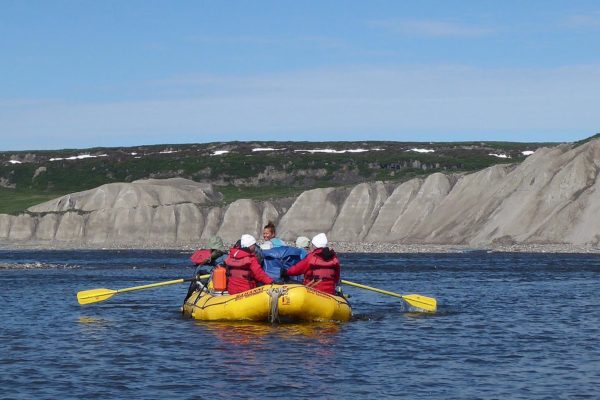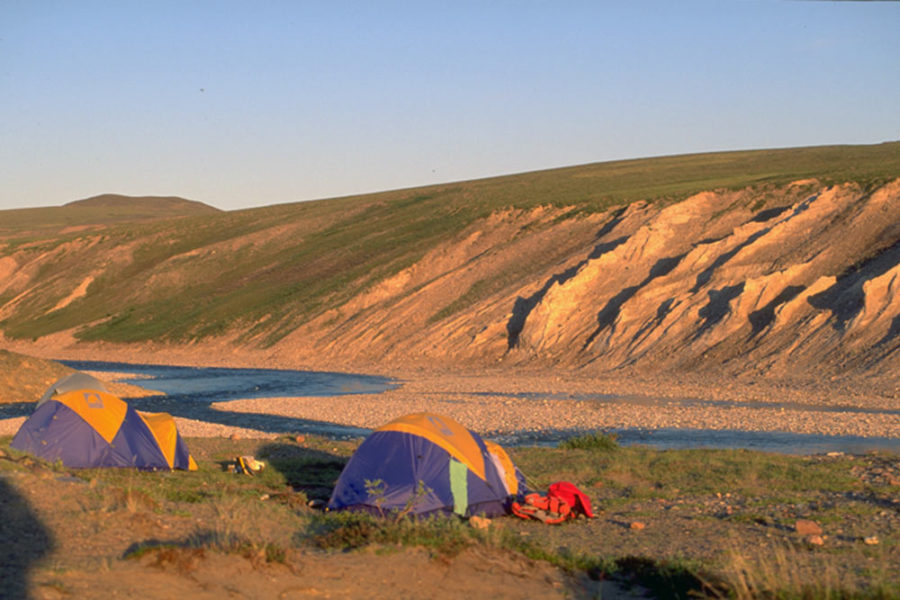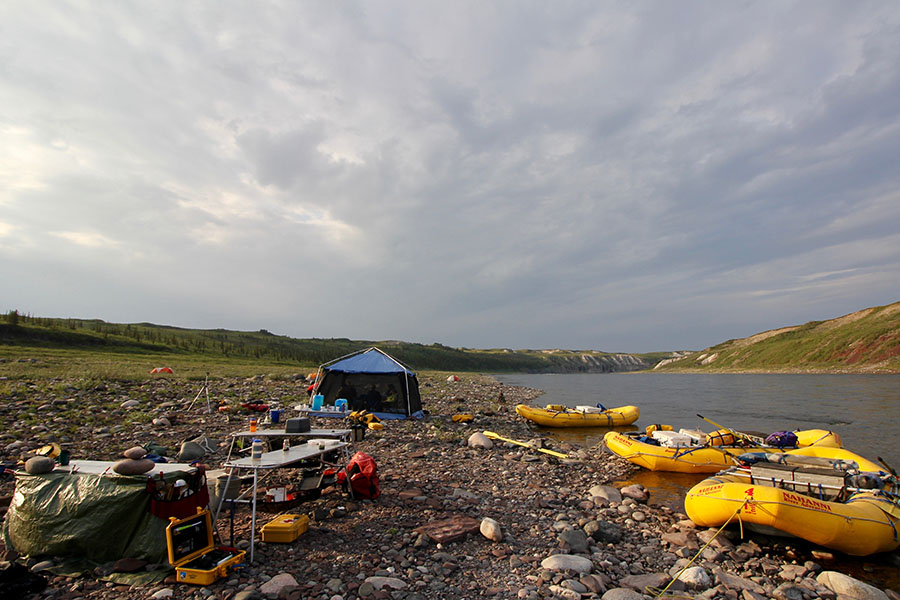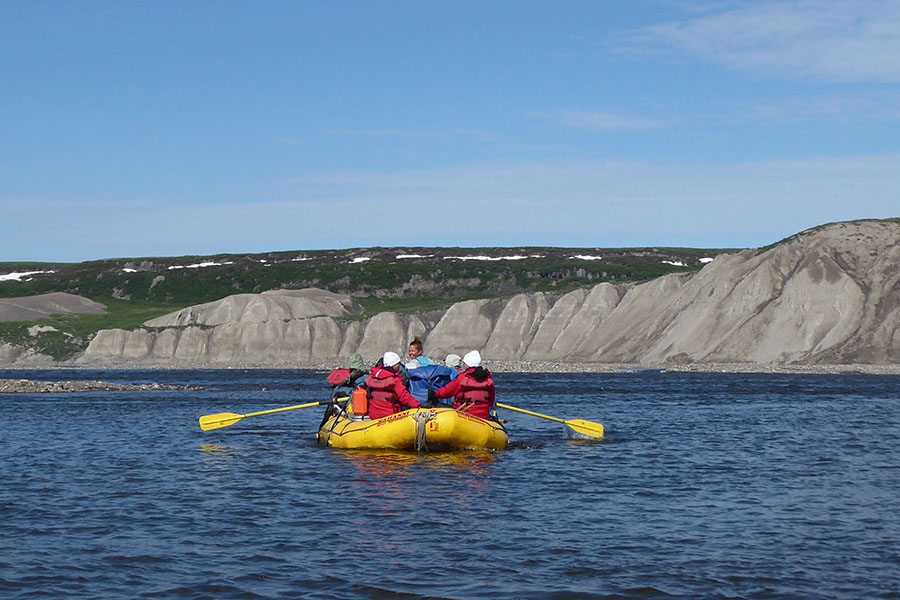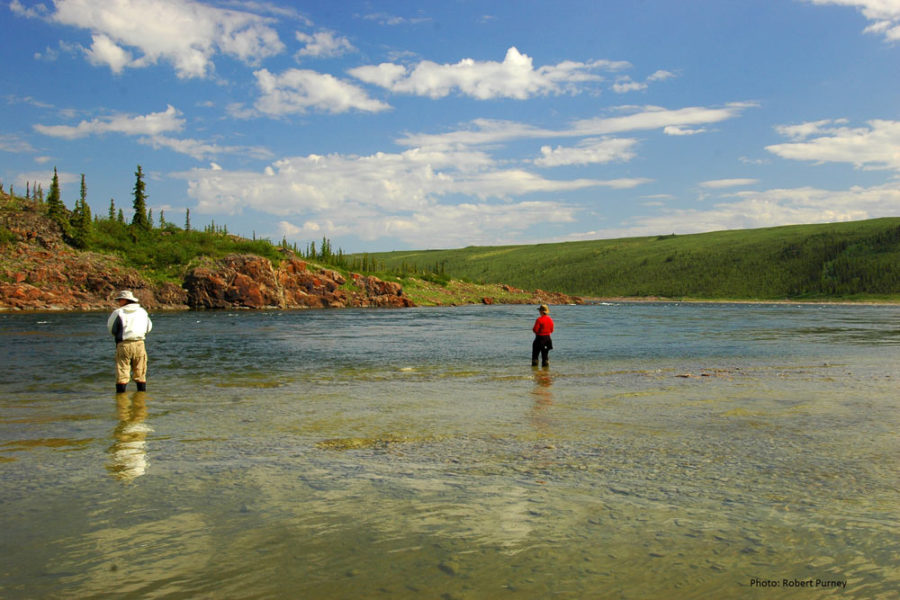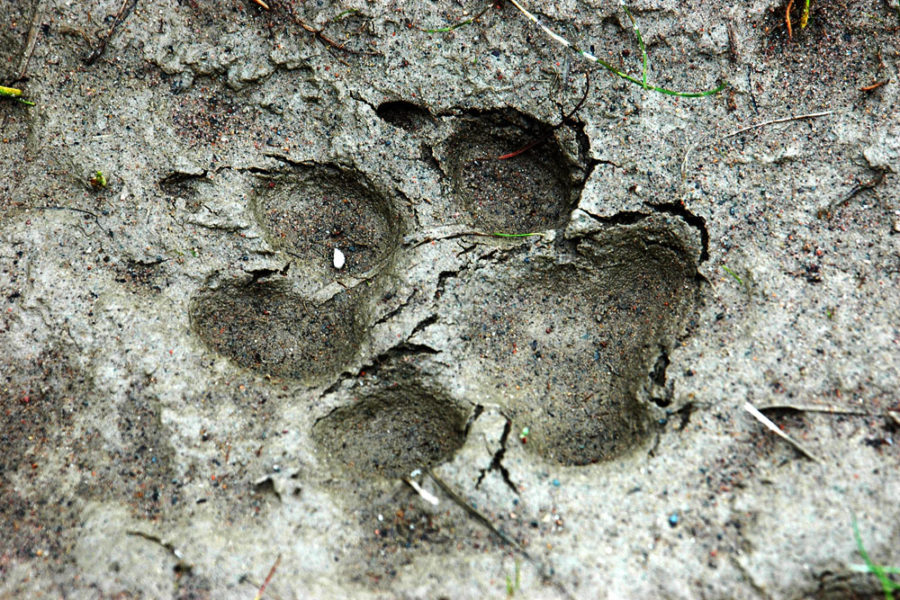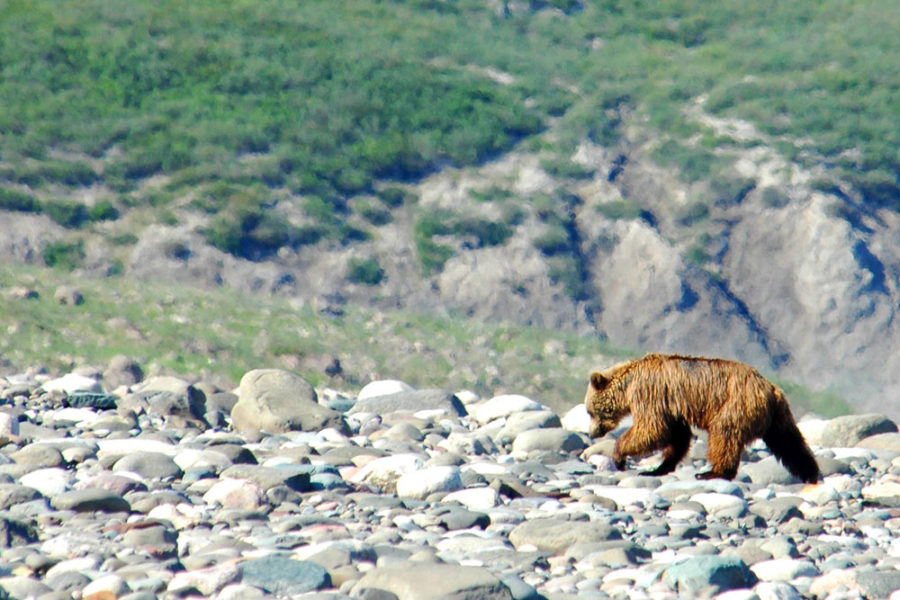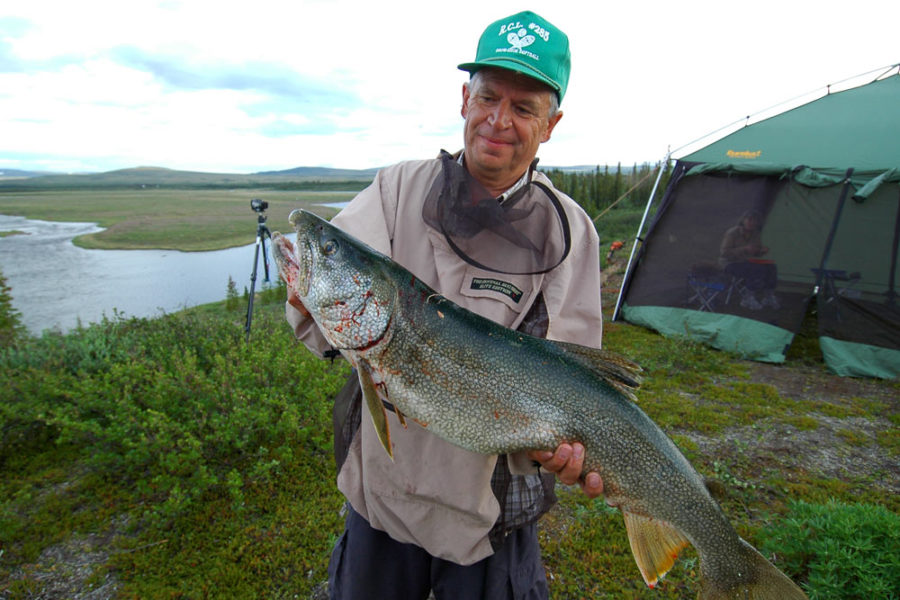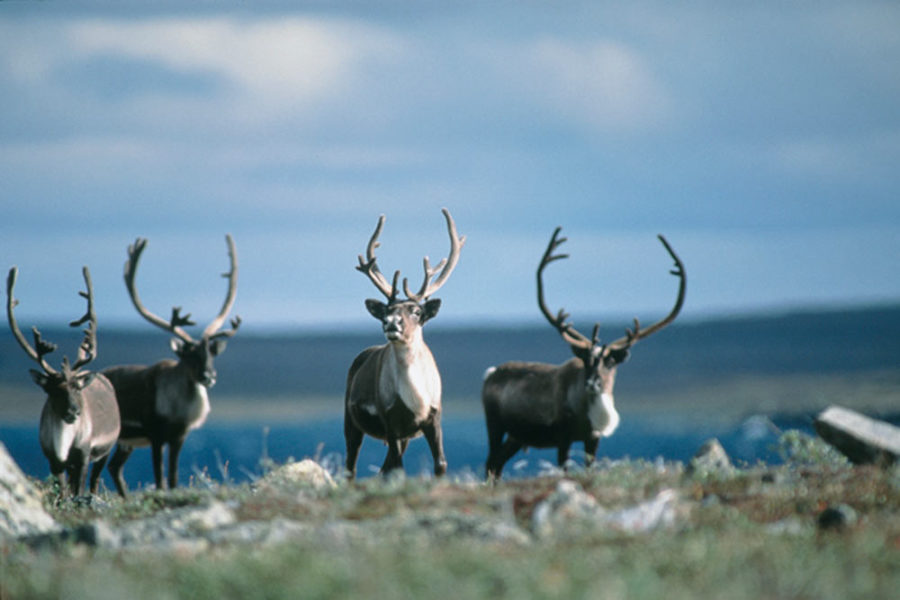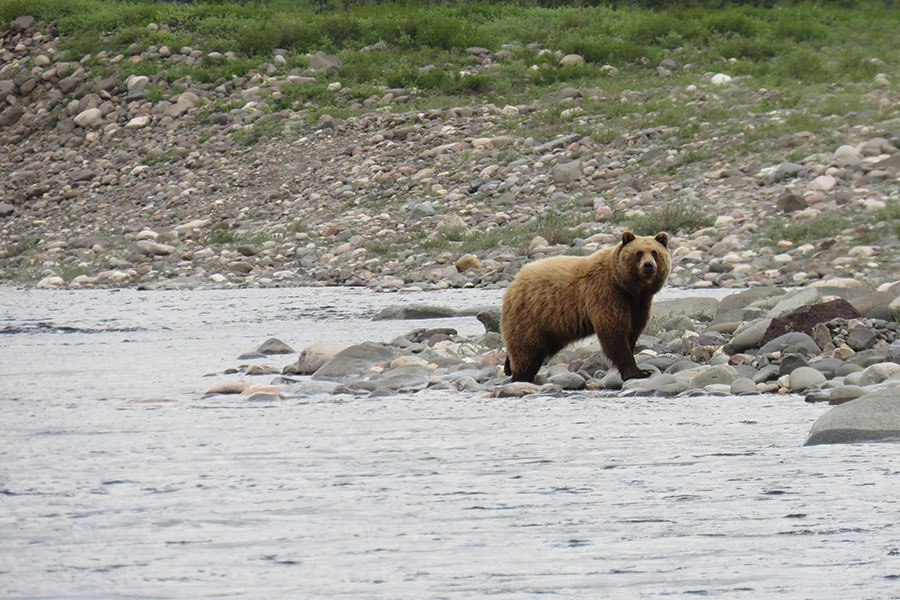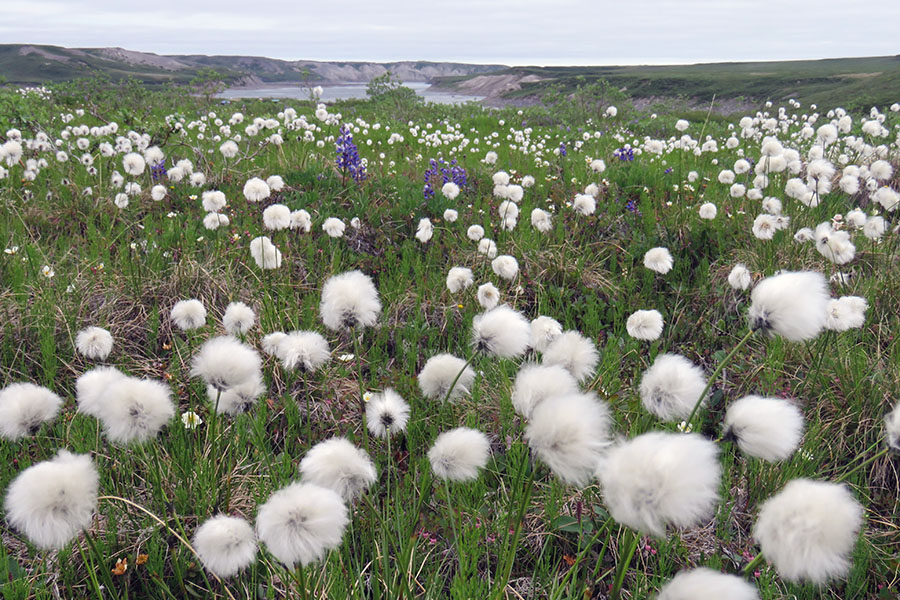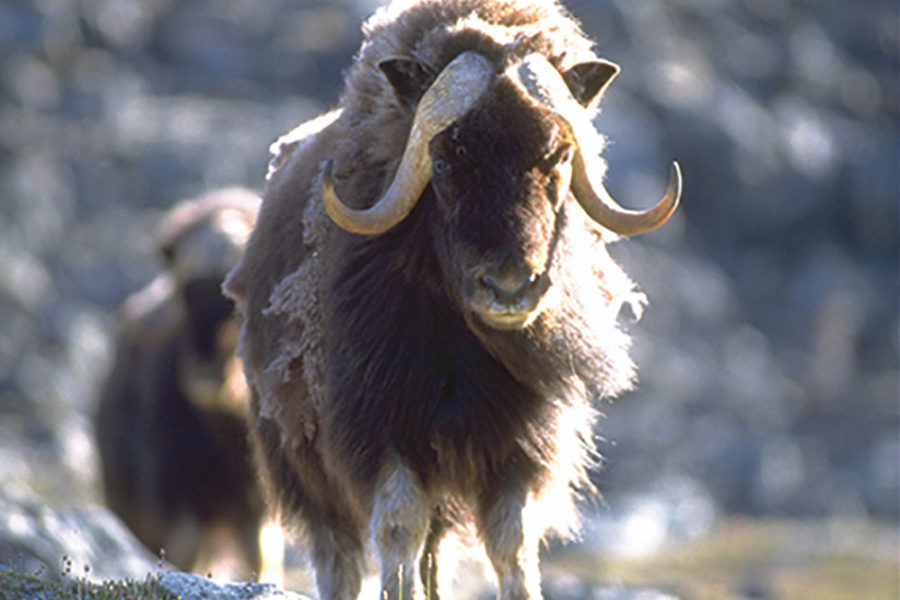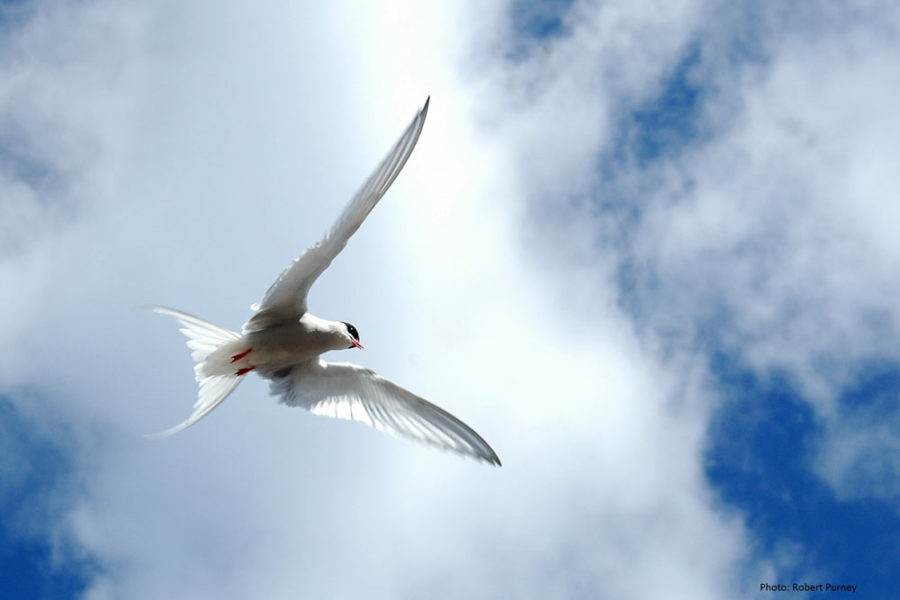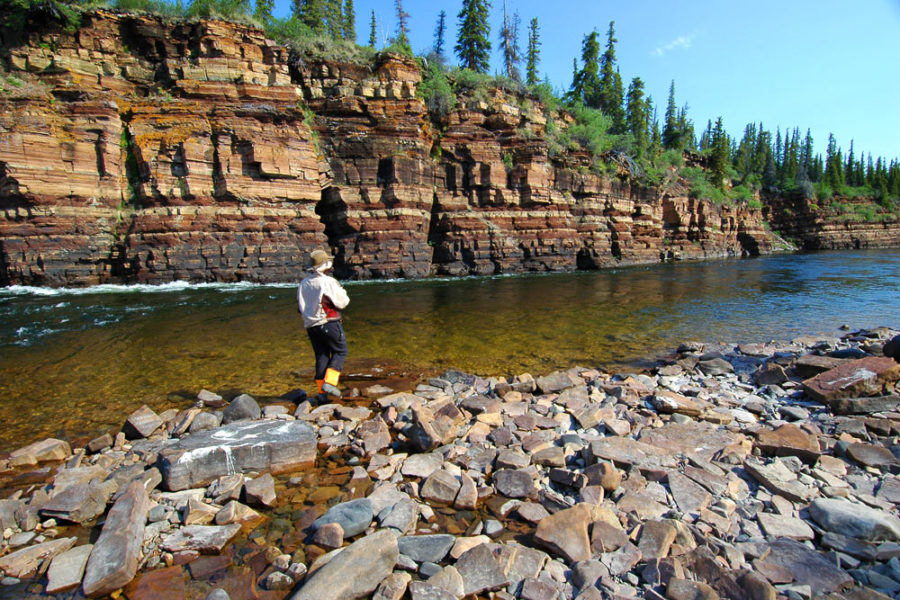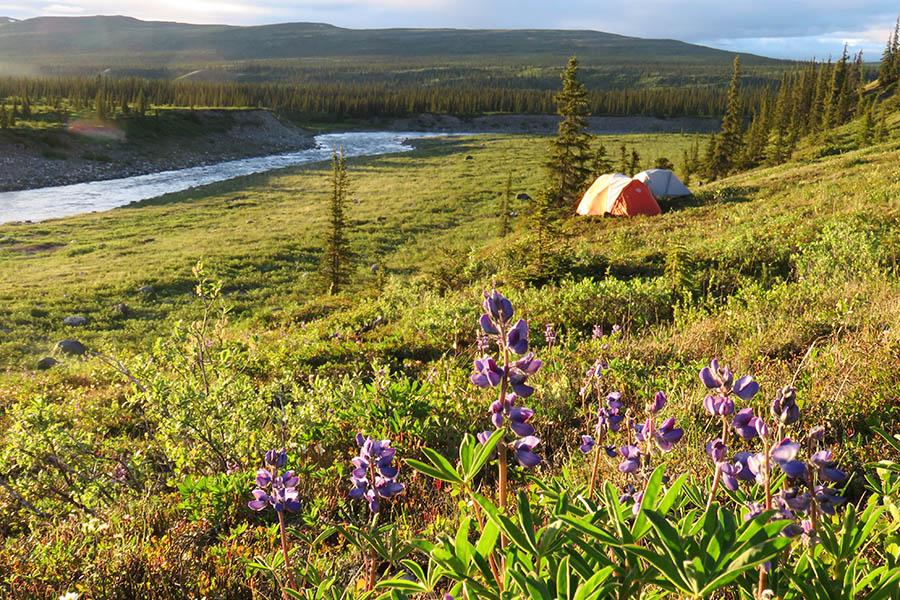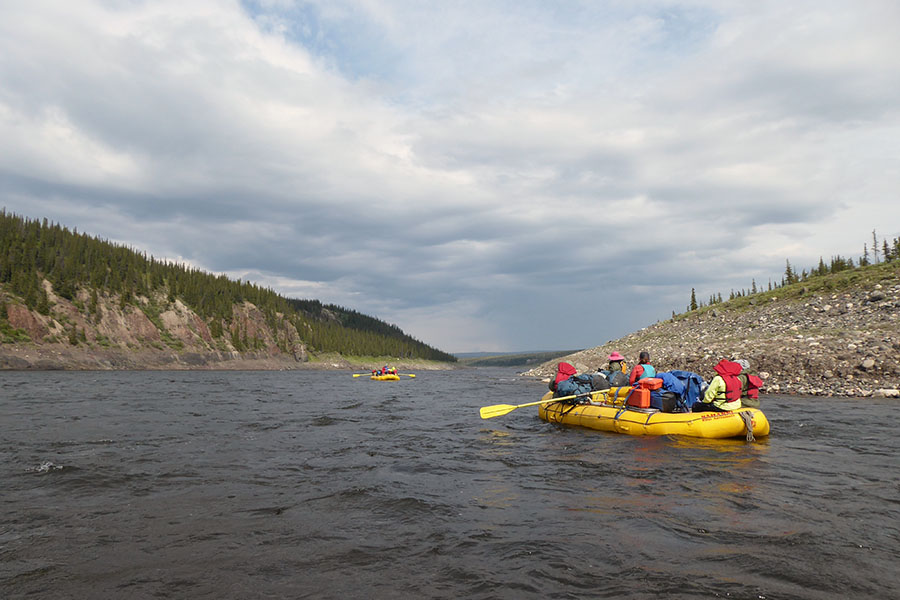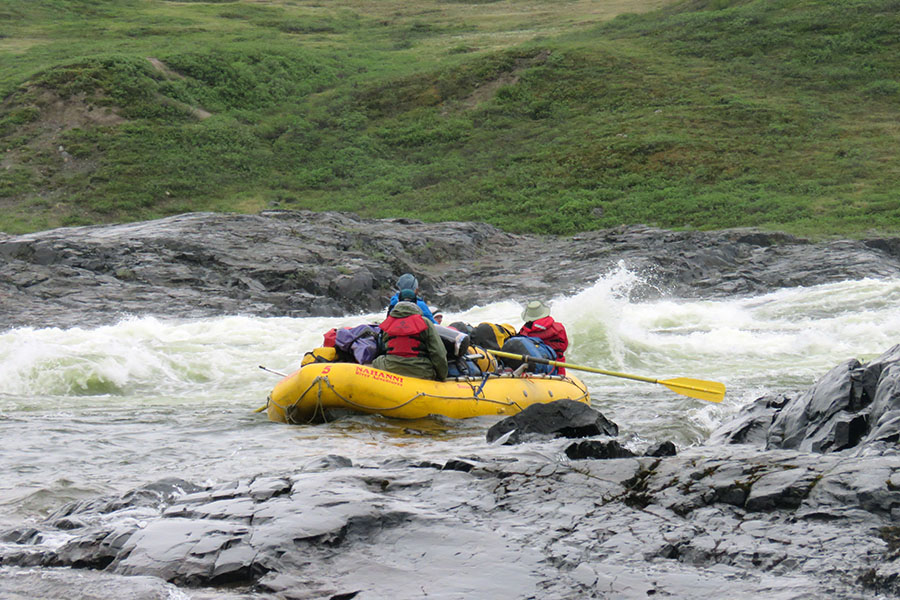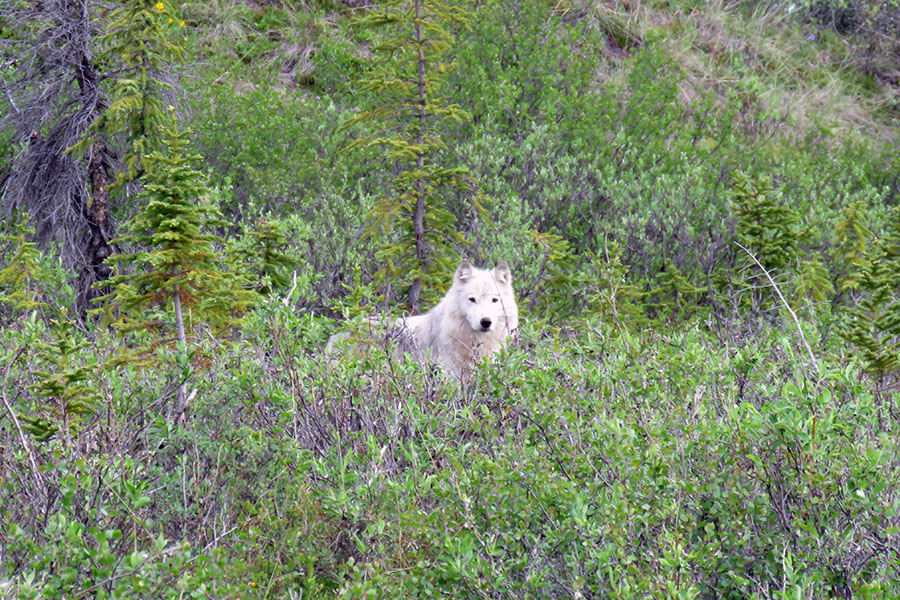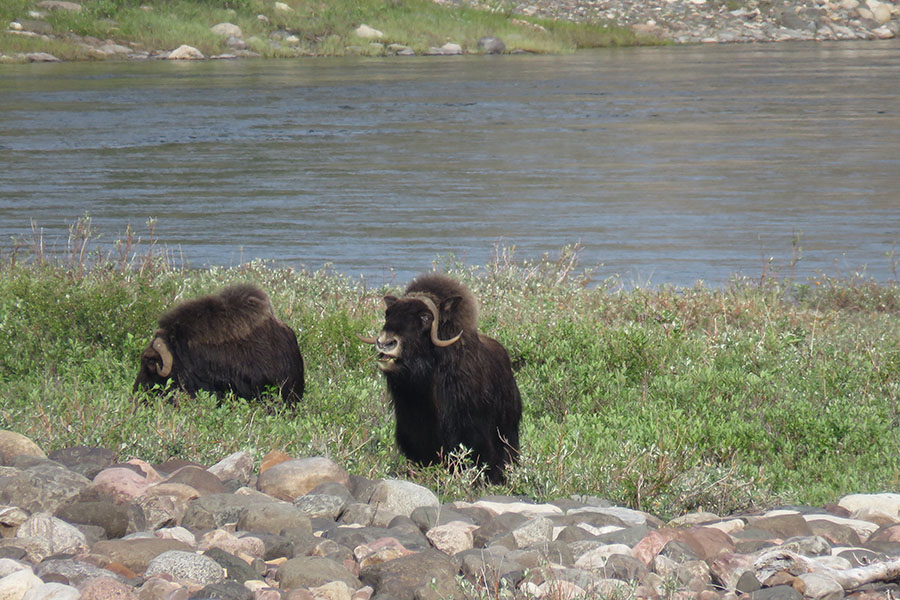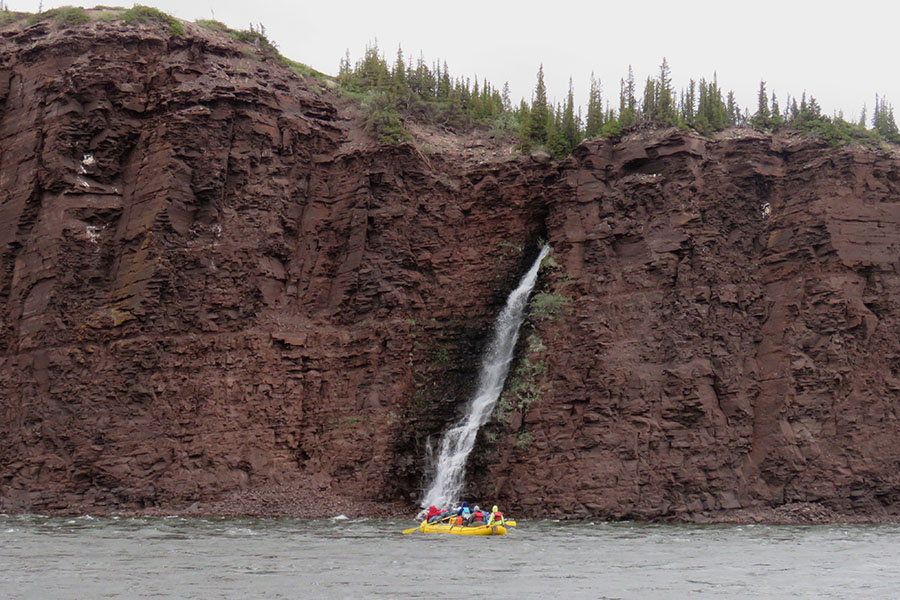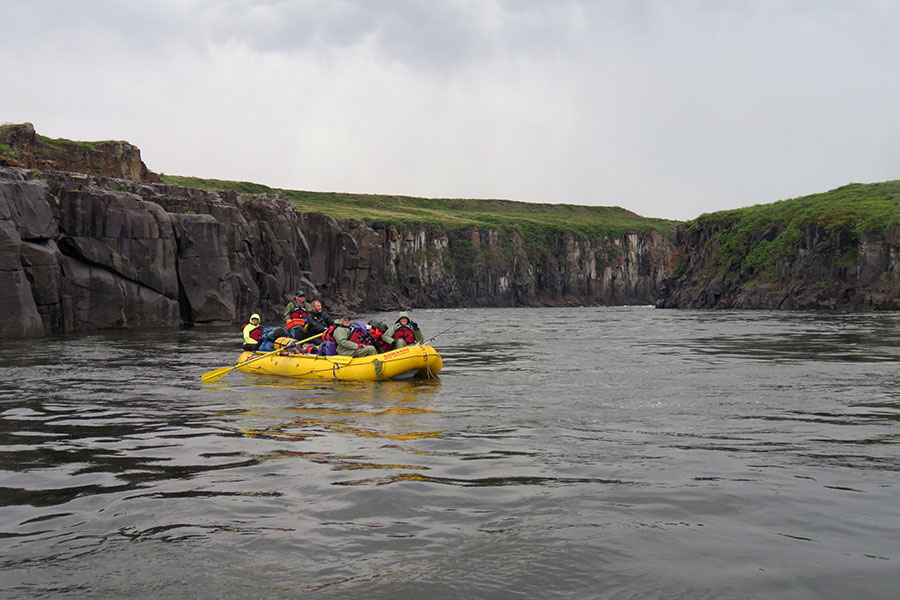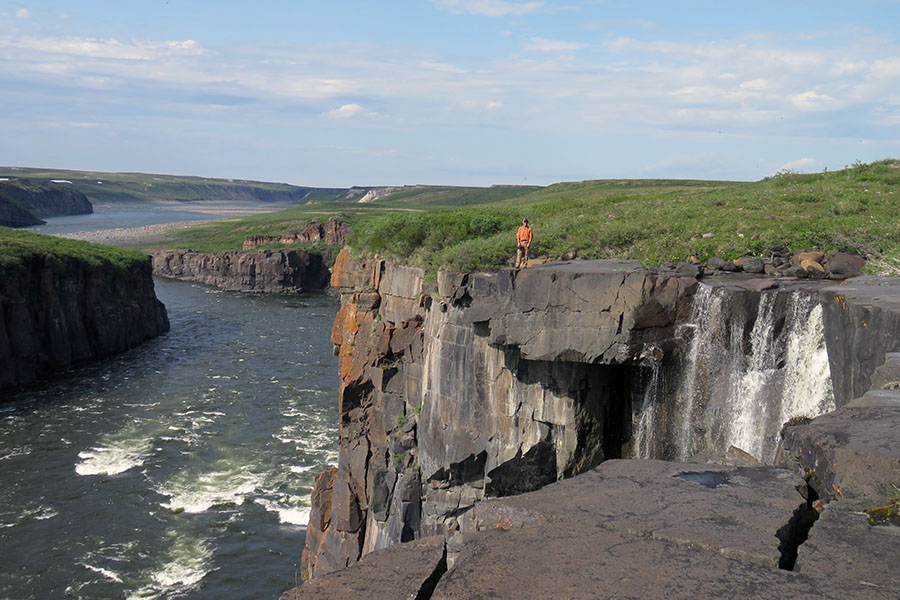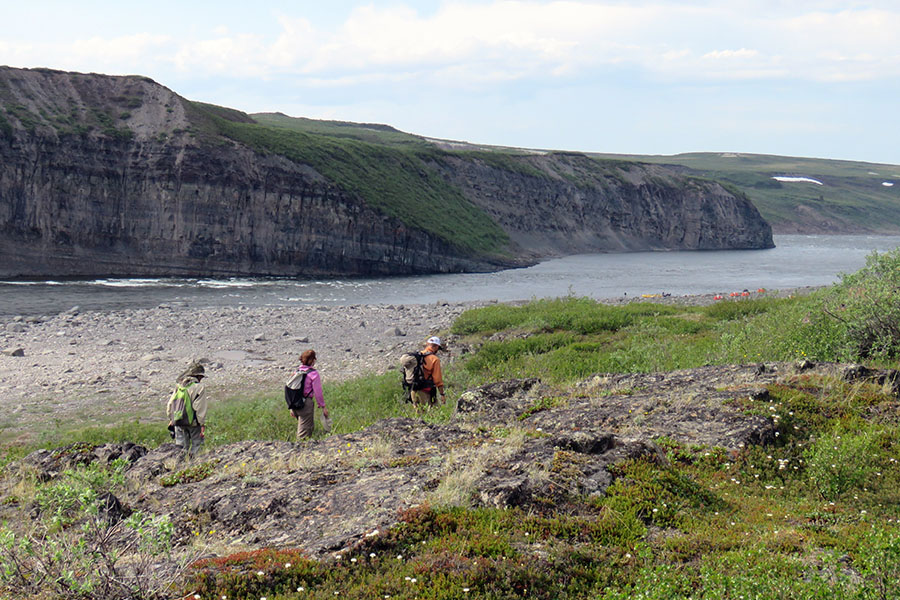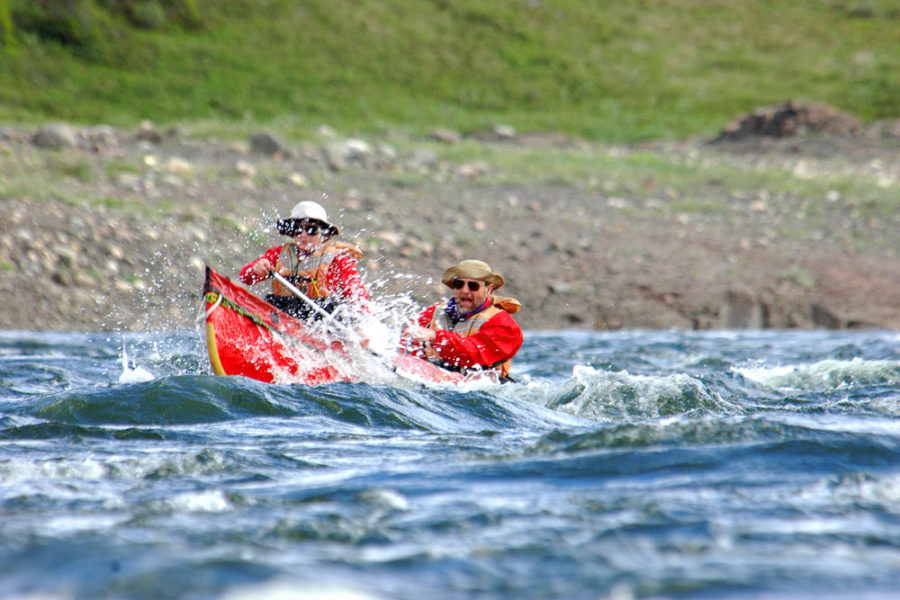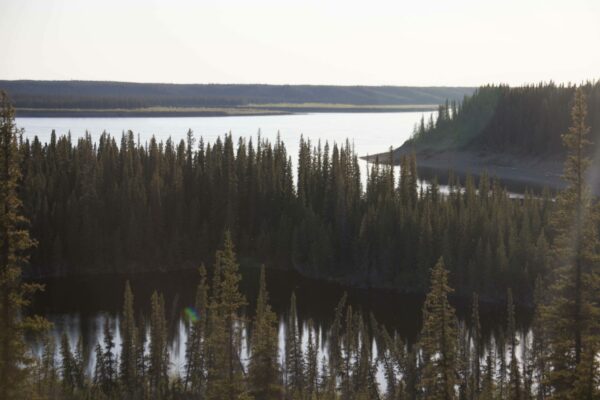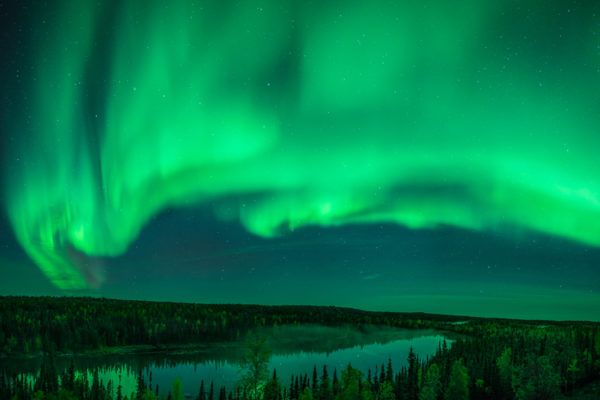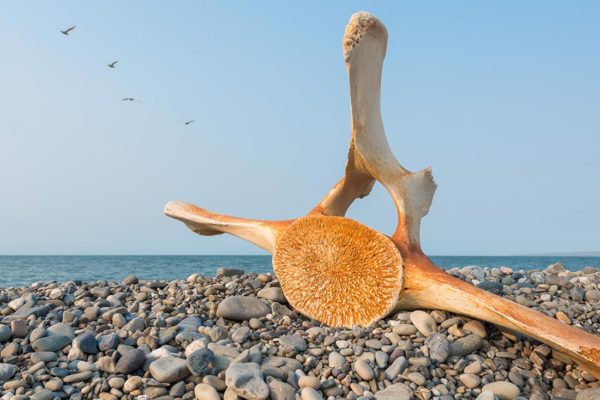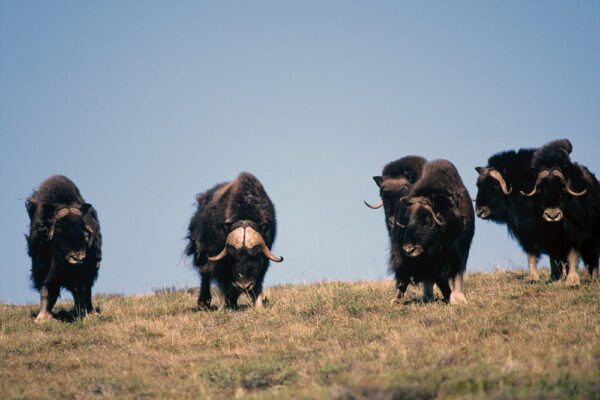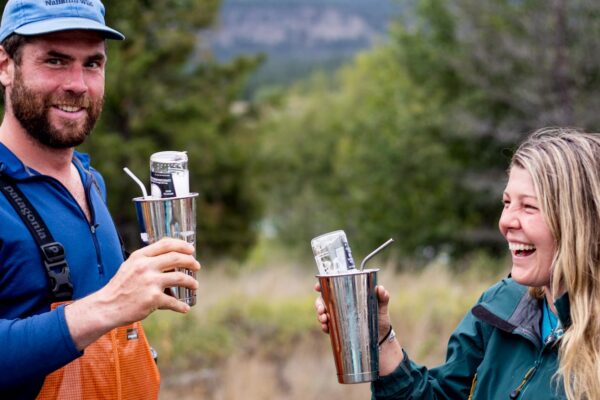Rafting & Canoeing Expeditions on the Coppermine River
Retrace the steps of John Franklin as you raft or canoe down the Coppermine River, a remote and beautiful arctic river famous for its nesting raptors. The Coppermine River has been proposed as a Canadian Heritage River because of its rich cultural history, natural significance and diverse recreational opportunities. The Coppermine is named for the mineral copper, which can be found in nugget form along the lower stretches of the river’s banks. Copper continues to be used by the local Inuit (also known as Copper Inuit), to fashion tools.
- Spectacular tundra hiking and wildflowers
- Home to muskox, caribou, wolves and raptors
- Human habitation of the river valley for at least 3000 years
- First explored by Samuel Herne for the Hudson’s Bay Company in 1771
The Coppermine River runs northwest, 845 kilometres from Lac de Gras near Great Slave Lake. Bloody Falls Park, located 13 kilometres south of Kugluktuk, is a popular camping and fishing spot for travellers and locals. The Coppermine River is home to many species of fish including Arctic Char, Lake Trout and Arctic Grayling. The Coppermine’s valley provides habitat for a variety of animals and birds such as moose, grizzly bears, Golden Eagles and Peregrine Falcons.
The community of Kugkluktuk is located at the river’s mouth where it enters Coronation Gulf. Home to the nomadic Copper Inuit, as well as the Athapaskan, Chipewyan, and Dogrib peoples, the Coppermine River’s headwaters lie in the barrens at Lac de Gras. The river then winds its way back into the tree line near Redrock Lake, finally leaving the trees again near Big Bend on its final plunge to the ocean through rapids bearing names like Rocky Defile, Escape, and Bloody Falls.
The human habitation of the Coppermine River’s valley goes back at least 3000 years. Samuel Hearne was the first European explorer to travel down the river in 1771. While exploring in this area, in 1772, he witnessed the massacre of a local Inuit group by a Chipewyan tribe he was travelling with at Bloody Falls.
Sir John Franklin also travelled down the river during the Coppermine Expedition of 1819–1822, the first of the three Arctic expeditions led by Franklin. The goal was exploration of the northern coast of Canada, which was accessible by the Coppermine River. The Royal Navy organized the expedition as part of its efforts to map the Northwest Passage.
The Coppermine Expedition was doomed from the beginning. Poor planning, lack of local support from trading companies and native peoples, harsh weather and scarcity of game kept the explorers on the edge of starvation. They eventually reached the Arctic coast, but much was left unexplored due to the onset of winter and limited supplies forced the party to turn back.
In desperation, they retreated across uncharted territory—at points with no food other than lichen to eat. Out of 20 people, 11 died amid accusations of murder and cannibalism. Previously thought to have perished, the survivors were rescued by the Yellowknife tribe.
Franklin was heavily chastised by local fur traders for his poor planning and failure to adapt to the environment. However, in Britain, he was considered a hero, lauded for his courage in extreme circumstances. The expedition became infamous, and in reference to desperate action the exploration party took when starving, John Franklin earned the nickname of “the man who ate his boots.”

